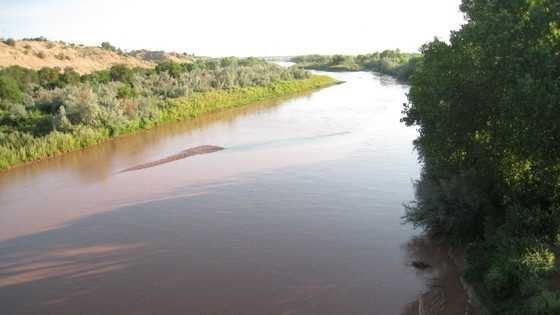Could the Rio Grande go dry in New Mexico? Experts warn it may happen

ALBUQUERQUE, New Mexico — Federal managers are warning that if hot and dry conditions persist, it’s possible that the stretch of the Rio Grande flowing through Albuquerque could dry up this fall.
The Bureau of Reclamation has teamed up with the Interstate Stream Commission and the Middle Rio Grande Conservancy District to lease the last block of water available to keep the river as stable as possible before winter.
Other emergency water releases happened earlier this year as spring runoff was poor and the monsoon season was too spotty to help reservoirs and the river recover. One of North America’s longest waterways, the Rio Grande runs through New Mexico from Colorado to Texas and into Mexico and is governed by interstate and international water-sharing agreements.
“Mother nature dealt us a really tough hand on the Rio Grande this year,” Reclamation area manager Jennifer Faler said, noting that the river’s flow has consisted primarily of water imported from the agency’s San Juan-Chama project.
Reclamation, the irrigation district and the stream commission will pay Albuquerque’s water utility a total of $700,000 for 7,000 acre-feet under the latest agreement. An acre-foot equals nearly 326,000 gallons (1.2 million liters) and is enough to serve one to two average households a year.
The utility earlier this year also stopped diverting water from the river in an effort to keep it flowing, relying instead on Albuquerque’s aquifer to meet demands. The utility reported in early September that use was up by more than 1 billion gallons compared to last year.
The state also had asked Colorado and Texas for emergency permission to use water stored in upstream reservoirs to keep the river flowing. A waiver was granted, and the water was released from July through early September. Officials said this allowed irrigation to continue further into the season and it kept the Albuquerque reach from going dry.
Without the extra water, officials said much of the Rio Grande would have dried in April and would have stayed dry for most of the summer. The river was in a similar predicament in 2018.
The concern is that this year’s emergency releases will leave very little water in the storage bank, and forecasts by federal climatologists indicate drought across much of the West will persist as chances are high for warmer temperatures and below-average precipitation over the next three months.
“We will be watching weather forecasts closely for any sign of relief and are already coordinating closely with our partners in preparation for what the next year might hold,” Faler said.


